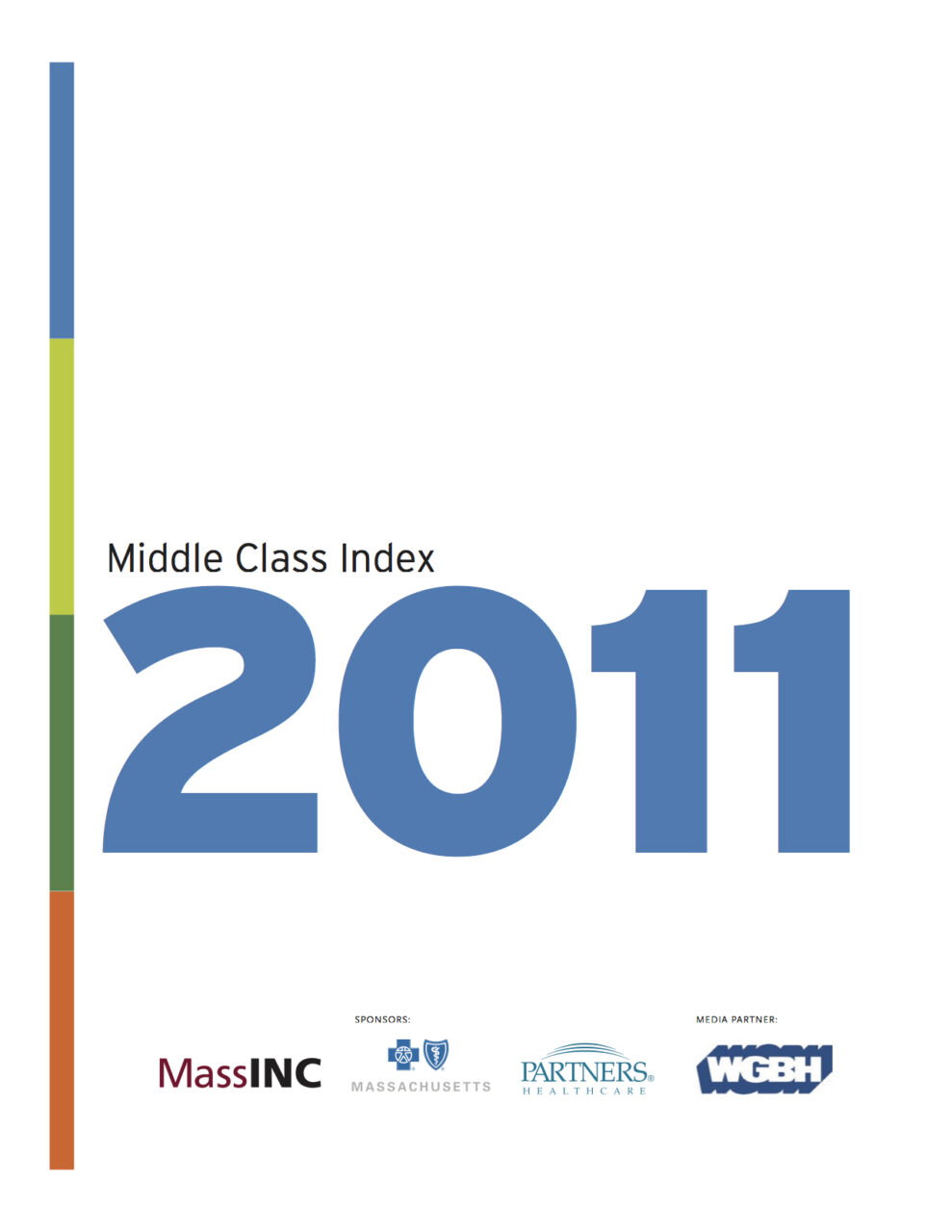The first-of-its-kind Middle Class Index is designed to serve as a barometer of the status of middle class residents. Composed of 26 different indicators, the overall score for Massachusetts in 2010 was 97.4, down 2.6 points from the benchmark figure of 100 for the year 2000. Nationally, the index number was 94.2.
The index number for Massachusetts is high, indicating that residents are still achieving the American Dream. But some key indicators are trending downward, an ominous sign that many risk falling out of the middle class if economic conditions fail to improve.
The 26 indicators used to compile the MassINC Middle Class Index are divided into four groups. Massachusetts fared well in three of the four groups, but did not do as well in the Financial Security Subindex, which dropped sharply to 76.4 as income became more volatile, savings rates fell, student debt piled higher, and personal bankruptcy filings became more common. (For the US, the fall in the Financial Security Subindex to 77.2 was nearly as steep.)
Massachusetts residents fared much better in the Achieving the Dream Subindex, indicating many middle class residents were achieving pillars of the American Dream. More residents were covered by health insurance, more purchased homes, and more students went on to college and completed degrees. Massachusetts scored 105.2 on the subindex, while the US score was virtually unchanged at 100.3.
The Working Conditions Subindex shows that residents, in the aggregate, aren’t necessarily working harder to make ends meet. In fact, the economic data suggest workers put more effort into their work in good economic times and less in downturns, contrary to popular belief. The Equal Opportunity Subindex shows that access to the American Dream is slowly improving for African American and Latino residents, although disparities remain large, particularly with homeownership in Massachusetts.
To accompany the economic data that make up the Middle Class Index, MassINC also devised a new Index of Middle Class Sentiment. This index relies on public opinion data collected from a representative sample of 500 adults living in the Bay State. The survey data show that difficult financial conditions are taking a toll. For instance, among those who self-identified their households as middle class, one-third said they were in danger of falling out of the middle class. And nearly half (48 percent) feel the next generation will be worse off than the previous one. Only 18 percent said they had an optimistic outlook for the future. (For more poll results, see page 37 of the report).
